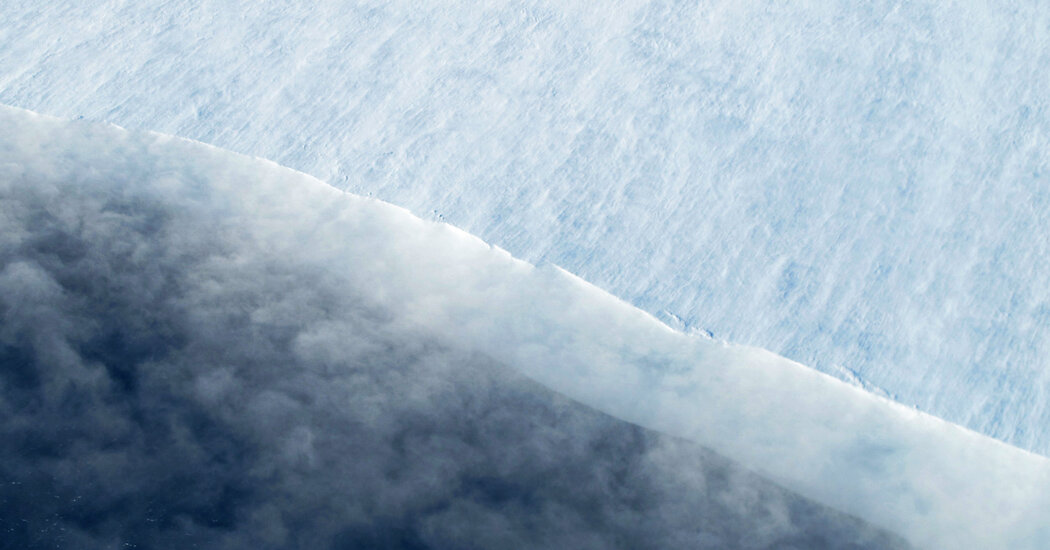Global warming is putting the continent’s ice at risk of destruction in many forms. But one especially calamitous scenario might be a less pressing concern, a new study found.
For almost a decade, climate scientists have been trying to get their heads around a particularly disastrous scenario for how West Antarctica’s gigantic ice sheet might break apart, bringing catastrophe to the world’s coasts.
It goes like this: Once enough of the ice sheet’s floating edges melt away, what remains are immense, sheer cliffs of ice facing the sea. These cliffs will be so tall and steep that they are unstable. Great chunks of ice start breaking away from them, exposing even taller, even more-unstable cliffs. Soon, these start crumbling too, and before long you have runaway collapse.
As all this ice tumbles into the ocean, and assuming that nations’ emissions of heat-trapping gases climb to extremely high levels, Antarctica could contribute more than a foot to worldwide sea-level rise before the end of the century.
This calamitous chain of events is still hypothetical, yet scientists have taken it seriously enough to include it as a “low-likelihood, high-impact” possibility in the United Nations’ latest assessment of future sea-level increase.
Now, though, a group of researchers has put forth evidence that the prospect may be more remote than previously thought. As humans burn fossil fuels and heat the planet, West Antarctica’s ice remains vulnerable to destruction in many forms. But this particular form, in which ice cliffs collapse one after the other, looks less likely, according to the scientists’ computer simulations.
“We’re not saying that we’re safe,” said Mathieu Morlighem, a professor of earth science at Dartmouth College who led the research. “The Antarctic ice sheet is going to disappear; this is going to happen. The question is how fast.”
